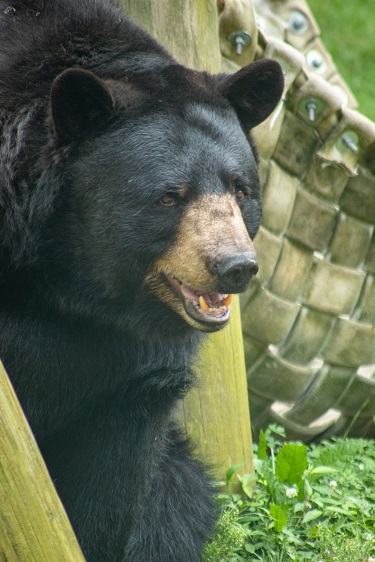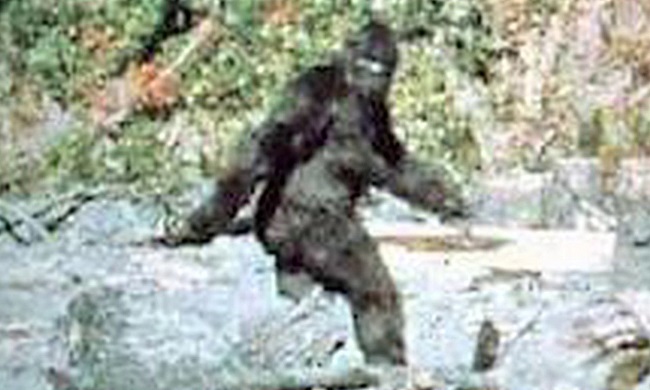
In the 1700s the Northeast Kingdom was (and still is to a certain degree) frontier country. It was inhabited by woodsmen, hunters, trappers, and fishermen extended families, mostly Wabanaki, but also a few sturdy others. Legend has that it was also the haunt of Slipperyskin, a bear, which is supposed to have caused general misery among the settlers. His name, Slipperyskin, was because he managed to elude every trap that was ever set for him. The Indians knew him and called him Wejuk or Wet Skin.
The animal seemed to derive satisfaction from terrorizing cattle and sheep, pushing over newly stacked woodpiles, throwing rocks in hayfields, and poking logs into bear traps. He was a wily one. There is a doubt as to the age of Wejuk or Slipperyskin, this animal that evidently had a grudge against humans, at least against the others. The earliest written report about him came from a man named Duluth, a scout with Roger’s Rangers, who passed through the then unsettled country in 1759 returning from the raid on Odanak. Duluth wrote in his journal, that as they made their way from Memphremagog Bay, the scouts: “were ever being annoyed, for naught reason,, by a large black bear, who would throw large pinecones and nuts down upon us from trees and ledges, the Indians being also disgusted, and know him, and call him Wejuk or Wet Skin.” He was still harassing folks in the 1800s when towns and villages were growing in population. Some of these stories are related in the town histories found in gazetteers. Here is a sampling.
Lemington
The story is told that an old bear once terrorized this part of the country for many years and committed wholesale destruction. He was a mean animal, and evidently had a grudge against humans. He destroyed their fences, ripped up their gardens, frightened their cows and sheep, tromped through the cornfields and caused no end of mayhem. He was a huge bear, the stories relate, and he always ran on his hind legs and never on all fours. Before a hunter could lay his gun sights on him, the old bear would vanish into the woods as silent and swift as a drift of smoke. He is said to have left tracks as big as wagon wheels, and for what it is worth, it is told he squeezed the sap out of maple trees when he felt so inclined. For maliciousness and cunning, it was claimed he could never be compared, except to humans. He seemed to enjoy himself immensely, frightening people and livestock, kicking over manure piles and throwing stones into machinery left in fields. Where the old bear came from, and why he eventually disappeared entirely is a mystery.

Maidstone
Maidstone was the scene in very early days of numerous depredations by an old bear known as Slipperyskin. Nastiness was to him a pleasurable activity, according to contemporary accounts. Filling sap buckets with rocks, throwing barbed wire into hay rakes and mowing machines were commonplace amusements with him. There is a story that Governor Jonas Galusha, who had a reputation as an excellent hunter, declared one time during an election year that he personally would rout out Slipperyskin from the northern Vermont woods once and for all. He claimed to have a plan which had never tried before.
A party of men led by the Governor came up to Maidstone, where the old bear had been reported seen only the day previous, stealing a ham out of a smokehouse, pushing over hay stacks, and doing sundry other damages. Upon arrival, the Governor produced a bottle of ointment and proceeded to soak himself with it. It was, he said the scent of a female bear and was his plan which had never been tried before. The Governor then loaded his gun and went into the woods. Shortly thereafter, he came running out of the woods toward the hunting party, with Slipperyskin right behind him. “Outta my way, boys,” shouted the Governor, “I’m bringin’ him back alive!” Whereupon the entire party scattered in haste for safety. Consequently no one shot the bear, the Governor lost the election that year, and his plan that had never been tried before was never tried again.
Morgan
It is said there were a great many organized hunts by the settlers in attempts to rid the north country of Slipperyskin, but all fell to failure. An incident is recounted that a group of hunters from Morgan were ascending a logging road leading to the summit of Elon Mountain, when suddenly they heard a loud thumping sound coming from up above them. Surmising it was Slipperyskin coming down the road, the men hastily leaped into the bushes and prepared to ambush him; seconds later a tree stump of great size bounced down the road past them going at tremendous speed. The story goes that as a consequence the hunters, allowing that the old bear was not in the mood to be hunted and weighing their narrow escape, called it a day and returned home.
Westmore
The story is that in Westmore long ago a group of German clergymen were picnicking on the shore of Lake Willoughby one day when they were suddenly set upon by the bear Slipperyskin, who had wreaked havoc and fear upon the settlers in these parts. The clergymen were forced to make a swift retreat for the safety of the woods. A short while later, one of the clergymen was reported missing. Authorities found a mutilated body in the underbrush. Later it was determined that the “body” was actually the mangled remains of several cheese strudels which had been part of the clergymen’s picnic lunch. The missing clergyman was later found alive and well, it is said, in Chicopee, Massachusetts.
Victory
Slipperyskin the bear is supposed, long ago, to have haunted and harassed the settlers of Victory. Among other things, it is related that he stampeded cattle, dragged trees through the cornfields, and threw stones at the school children. Many hunting parties were organized to hunt him down, but they were fruitless. He was a shrewd and wily animal, if one is to believe the stories, and he seemed to enjoy the chase. An early account states, “the bear would back right back in the tracks of his forward movement, with such accuracy and precision, that no one who did not suspect the trick would see any signs of a reverse movement, until the bear came to some large rock, or knoll, then give a long leap on to a bare spot and move off in a direction diverging from that just pursued.” This was some prowess. Hunting dogs were said to be of no use in hunting him down, since the bear was so old his scent had long before worn off.
It is difficult to separate fact from hearsay concerning this animal. So, was Wejuk, Slipperyskin, a bear, a Northeast Kingdom Bigfoot, or an Native American who was trying to discourage the others from intruding on his homelands and hunting territories?
This article was contributed by Scott Wheeler of Vermonter.com.
Related Articles & Free Vermont Maturity Subscription

Dive Into History With The Shipwrecks of Lake Champlain
The Vermont Republic – The Story of When Vermont was an Independent Country






Comment here